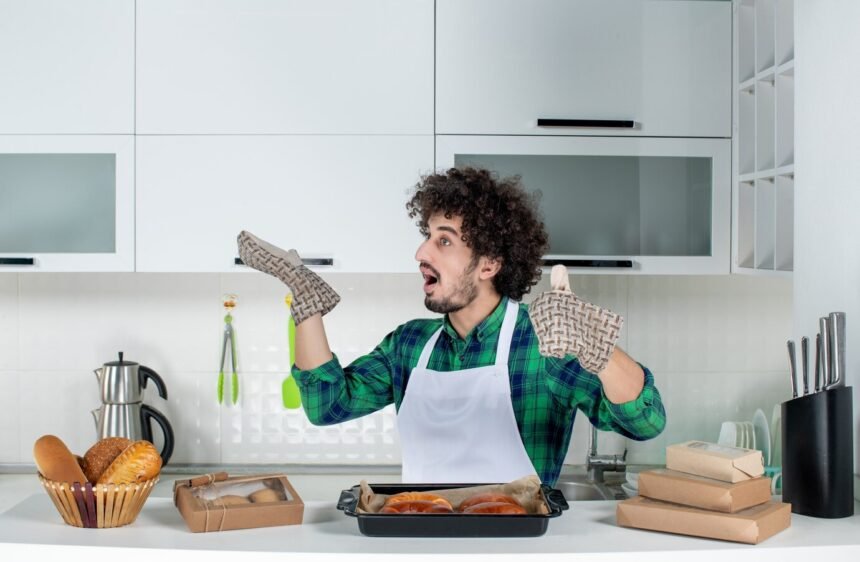The kitchen spalding, also known as a spurtle, is a versatile and indispensable tool in the culinary world. While its origins can be traced back to Scotland, this simple yet effective utensil has found its way into kitchens worldwide, becoming a favorite among chefs and cooking enthusiasts alike. In this article, we will delve into the history of the kitchen spalding, its various uses, and why it has become a must-have tool for anyone passionate about cooking.
History and Origins
The spalding has a long history dating back to ancient times when it was primarily used in Scottish households for stirring porridge. Traditionally made from wood, the spalding has a unique design featuring a long, slender handle and a flat, spatula-like end. Its shape allows for efficient stirring and mixing of ingredients without damaging the pot or pan’s surface.
Over the years, the spalding has evolved in design and materials, with modern versions now available in a variety of materials such as silicone, stainless steel, and bamboo. Despite these advancements, the fundamental purpose of the spalding remains unchanged – to aid in stirring, mixing, and flipping ingredients while cooking.
Versatile Uses
The kitchen spalding’s versatility is one of its most appealing features. From stirring sauces to flipping pancakes, this handy tool can handle a wide range of kitchen tasks with ease. Here are some common uses of the spalding:
- Stirring and Mixing: Whether you’re whipping up a batch of creamy risotto or a hearty stew, the spalding is perfect for gently stirring and mixing ingredients without causing splashes or spills.
- Flipping and Turning: Its flat end makes it ideal for flipping delicate foods like fish fillets, pancakes, or omelets, ensuring they cook evenly without breaking apart.
- Scraping and Spreading: The spalding’s flat edge can also be used for scraping the bottom of pots and pans to prevent food from sticking and spreading sauces or batters evenly.
- Serving and Plating: Its elegant design makes the spalding a stylish serving utensil for dishes like salads, pasta, or desserts, adding a touch of sophistication to your table setting.
Why Choose a Kitchen Spalding?
There are several reasons why the kitchen spalding has gained popularity among home cooks and professional chefs alike:
- Gentle on Cookware: Unlike metal utensils that can scratch or damage non-stick pans and pots, the spalding’s smooth surface ensures your cookware remains in pristine condition.
- Versatility: From sautéing vegetables to stirring soups, the spalding can handle a wide range of cooking tasks, reducing the need for multiple utensils cluttering your kitchen.
- Ergonomic Design: The spalding’s long handle provides a comfortable grip, allowing you to stir and mix ingredients effortlessly without straining your wrists or hands.
- Easy to Clean: Most kitchen spaldings are dishwasher safe, making cleanup a breeze after a busy cooking session.
Tips for Using a Kitchen Spalding
To make the most of your kitchen spalding, here are some tips to keep in mind:
- Choose the Right Size: Select a spalding that matches the size of your cookware to ensure efficient stirring and mixing.
- Avoid High Heat: While many spaldings are heat-resistant, it’s best to avoid using them at high temperatures to prevent damage or warping.
- Store Properly: To prolong the lifespan of your spalding, store it in a utensil holder or drawer to prevent it from getting damaged or lost.
- Experiment with Recipes: Get creative in the kitchen and explore new recipes where the spalding can showcase its versatility and usefulness.
In Conclusion
The kitchen spalding is a timeless tool that continues to be a staple in kitchens worldwide. Its simple yet effective design, versatile uses, and gentle nature on cookware make it a must-have utensil for anyone passionate about cooking. Whether you’re a seasoned chef or a home cook looking to elevate your culinary skills, the kitchen spalding is sure to become your go-to tool for all your cooking adventures. Upgrade your kitchen arsenal with a spalding today and experience the difference it can make in your cooking endeavors.











